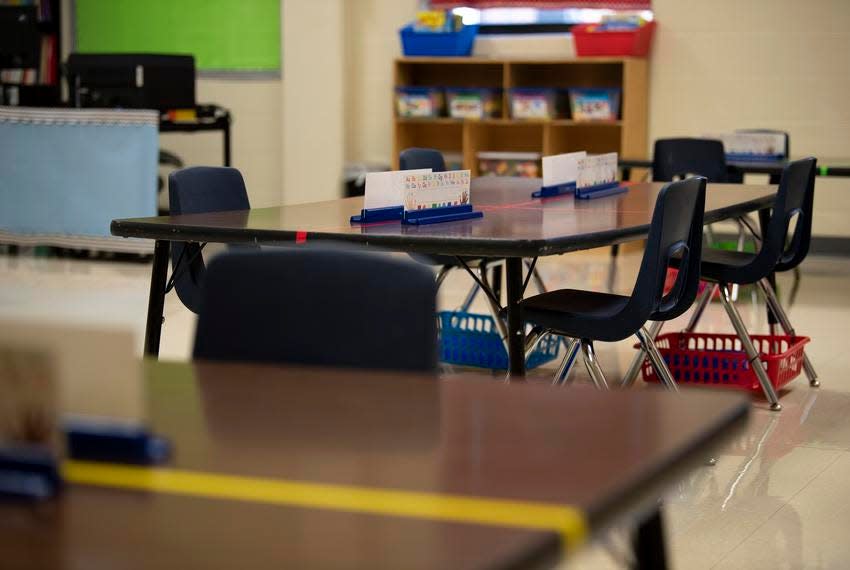A school district in the Kansas City, Missouri, area could be the next large K-12 system to shorten its week from five to four days.
St. Joseph School District, which serves more than 10,000 students, including a growing English-language learner population, this week announced it will be exploring the possibility of a four-day school week. Officials hope the reduction, which wouldn’t go into effect until the 2024-25 school year, would help address gaping staff vacancies, particularly in the ELL department.
The move comes after board members of Independence School District, a school system east of Kansas City, voted 6-1 earlier this month to adopt a four-day week. In doing so, Independence became the largest district in the state, serving roughly 14,000 students, to adopt the shortened schedule.
How much time do kids spend in school?: It depends on where they live.
What states have 4-day school weeks?
Instructional time policies often vary by district, but the four-day model is particularly pronounced in certain states, including those in the western region of the country and the South. Dozens of school districts in Texas have shortened their weeks.
More than a quarter of Missouri’s school districts had four-day weeks as of the start of the 2022-23 school year. The districts tend to be small and rural. The second-largest Missouri district with a four-day week, for example, serves just 3,000 students.
Four-day weeks have been a relatively common – and often well-received – format in small, rural districts since well before the COVID-19 pandemic.
Brookings Institute research shows they’ve grown in popularity over the past two decades. An analysis published shortly before the pandemic found at least 662 districts across two dozen states with four-day weeks.
Teacher shortages fuel four-day school week
The pandemic has accelerated the four-day week trend, particularly as schoolsgrapple with teacher and support staff shortages.
According to a federal survey conducted in October, nearly half (45%) of public schools have at least one vacant teaching position, about the same rate as when the survey was previously conducted in January. Across the country, 4% of teaching positions remained vacant this fall, though the problem was pronounced in special education (7% of positions unfilled) and English language-learning programs (6%).
Back in St. Joseph in Missouri,six of the more than 20 ELL teaching positions are vacant. Yet students learning English are the district’s fastest-growing group, from several hundred a decade ago to more than 1000 today. Roughly three dozen languages are spoken, including Spanish, Chuukese and Burmese.
Overworked, underpaid?: The toll of burnout is contributing to teacher shortages nationwide
Learning loss affects these kids most: he teacher shortages are just piling on
Are 4-day weeks better?
St. Joseph School District’s next steps will involve lots of consultation with Independence officials as well as community members, said Gabe Edgar, St. Joseph’s superintendent.
From a logistics standpoint, four-day weeks are appealing. Shortened weeks are often a strategy for recruiting and retaining teachers, particularly in rural and other hard-to-staff areas.
They can also help cut costs, particularly on electricity and other building expenses.
The consequences of 4-day school weeks
Shortened school weeks can cause headaches for parents, from childcare burdens to transportation issues. Manylow-income families rely on schools to provide breakfast and lunch.
Then there are the academic ramifications, of course. Research shows more high-quality instructional time is key to catching kids up from COVID-19-era learning disruptions.
Some schools and districts try to compensate for the lost day with added hours to the other four days or other extracurricular opportunities. Still, one study found that on average students who attend them spend 85 fewer hours on instruction every year.
“The move to four-day school weeks is an unequivocally bad thing for kids and families,” Matt Kraft, an education researcher and professor at Brown University in Rhode Island who has studied instructional time, told USA TODAY earlier this year.
Edgar said his end goal “is to do what’s best for students.” He said he’d rather “take a chance and fail than sit there and not do anything.”
“Just try it and see if it happens. If it’s good, it’s good. If it’s bad, … we’ll get back up and start over.”
Contact Alia Wong at (202) 507-2256 or [email protected]. Follow her on Twitter at @aliaemily.
This article originally appeared on USA TODAY: Four days of learning? More US schools consider shorter weeks
Source: Read Full Article
